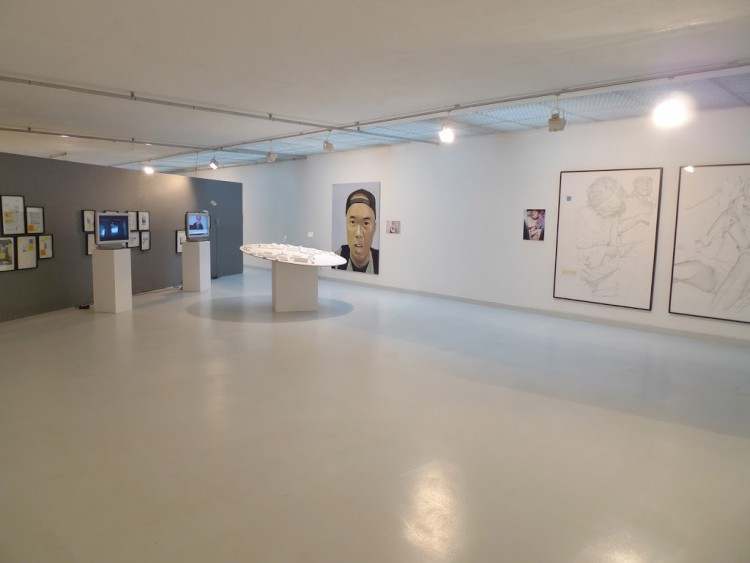
False Recognition
2010.VI.18 – VIII.15
Opening: Friday 18 June, 6 pm
Artists: Jānis Avotiņš (LV); John Baldessari (US); Romualdas Balinskas (LT); Lina Bjerneld (SE); Niels Bonde (DK); Michaël Borremans (BE); Koen van der Broek (BE); Ina Budrytė (LT)¬; Damien Cadio (FR); Henrikas Čerapas (LT); Hadassah Emmerich (NL); Takeo Hanazawa (JP); Hannaleena Heiska (FI); Jörg Herold (DE); Kim Hiorthøy (NO); O Jun (JP); Patricija Jurkšaitytė (LT); Tillman Kaiser (AT); Eglė Karpavičiūtė (LT); August Künnapu (EE); Raoul Kurvitz (EE); Matts Leiderstam (SE); Tor-Magnus Lundeby (NO); Victor Man (RO); Inga Meldere (LV); Eglė Ridikaitė (LT); Nina Roos (FI); Viktor Rosdahl (SE); Adam Saks (DK); Praneet Soi (/NL); Radek Szlaga (PL); Ričardas Povilas Vaitiekūnas (LT); Aušra Barzdukaitė – Vaitkūnienė (LT); Ruslan Vashkevich (BY); Alfonsas Vilpišauskas (LT); Jakub Julian Ziólkowski (PL)
Many of the problems contemporary painters are facing are not new. Shall painting be used to make images, or shall it by-pass any quest for illusion and express itself through gesture and tactility? Shall painting stay on the surface or shall it create depth? Shall it visualise ideas or attract attention to its own materiality?
So, can painting articulate any new thoughts? Newness in painting might be something that at first looks very small, even insignificant. It might be a change of tone rather than a change of programme. It might be a shift in confidence or craftsmanship, a dexterity or an awkwardness that we have not seen before in this precise constellation. It might be ‘a new way of seeing’ that manifests itself as painting.
The 14th Vilnius Painting Triennial takes a broad look at what ‘new thoughts in painting’ might mean, and also at some ‘new names in painting’: artists who exemplify the tension between tradition and newness and whose work embodies different attitudes towards the image, the gesture, time and subjectivity.
But the Triennial does not only focus on younger artists. Some new names may belong to painters who have been around for a while but have not yet become ‘old names’, or to painters who have been identified with one set of thoughts but are now beginning to formulate new ones.
Painting tends to be appreciated differently in different regions of the world. The Triennial takes Lithuania and the Baltic Sea Region as a point of departure. This reflects not just geographic proximity but also a certain visual sensibility that has emerged in this part of Europe over a longer period of time and can perhaps also be detected in contemporary painting.
The 14th Vilnius Painting Triennial is entitled False Recognition, in reference to a ground-breaking essay by the philosopher Henri Bergson (1859–1941). Memory of the Present and False Recognition was published in 1908. It analyses a phenomenon similar to the well-known experience of déjà vu but much stronger, when we have the sensation of reliving in the present moment not just an image or an isolated situation but a whole sequence of events.
Bergson’s purpose is to illustrate his vision of how perception and memory, the ‘new’ and the ‘old’, are in fact intertwined in the present moment. He speaks of the present as a crystal or prism that constantly moves ahead, refracting time into one ray that bends off into the past, becoming ‘pure memory’, and another one that bends off into the forever-unknown future, becoming ‘pure perception’.
These pure entities are never manifested as such, of course; they blend to form various gradations of memory and perception which sometimes, as in false recognition, become confused. As an exhibition title ‘False Recognition’ is used metaphorically. It describes the difficulty of isolating new thoughts against the backdrop of a long tradition. It also underlines how difficult it can be to define what is truly new in an environment permeated by recognition of what is already known. New thoughts in painting cannot always be neatly captioned.